Saddleworth, West Riding of Yorkshire
Up to 1834
The Saddleworth with Quick Gilbert Union was in operation from around 1810 until 1853. The union operated a workhouse on Running Hill Lane near Dobcross (see below).
A poorhouse also existed at Daisy Hill on Knarr Barn Lane, Thurston Clough, near Delph.
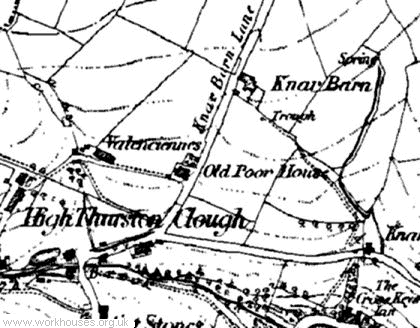
Knarr Barn Lane poorhouse site, 1854.
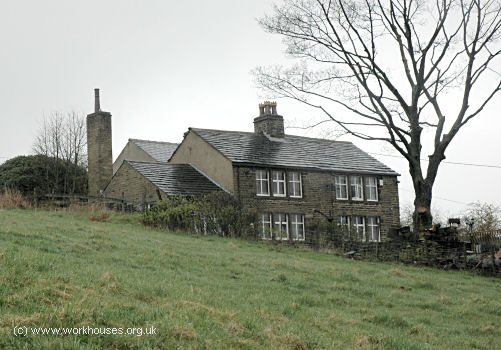
Knarr Barn Lane former poorhouse, 2006.
After 1834
In May 1853, the Saddleworth Gilbert Union was dissolved and Saddleworth became a Poor Law Township under the 1834 Poor Law Amendment Act. The Township carried on using the old workhouse on Running Hill Lane which was enlarged in 1855. The workhouse location and layout are shown on the 1906 map below.
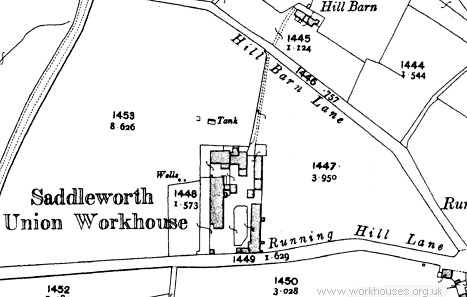
Saddleworth site, 1906.
The main house at the west of the site was of two and three storeys.
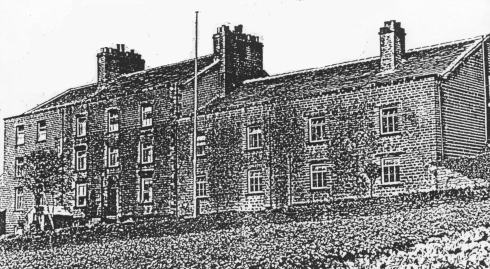
Saddleworth main building.
A single-storey long building at the east contained a porter's lodge, casual wards and a mortuary.
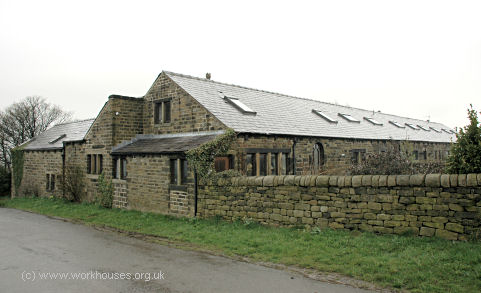
Saddleworth former porter's lodge and casual ward block, 2006.
© Peter Higginbotham.
At the north of the site were a laundry, piggeries, a cow shed and a barn.
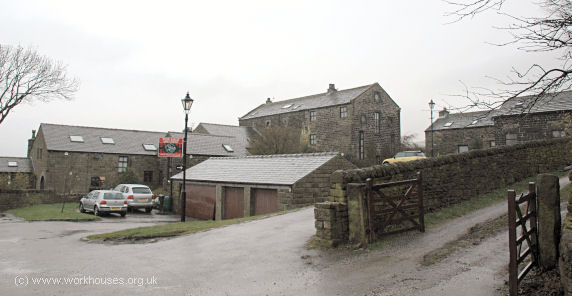
Saddleworth former laundry block etc. from the south-west, 2006.
© Peter Higginbotham.
In 1866, the workhouse was visited by Poor Law Inspector Mr R.B. Cane. His report concluded:
The classification consists of but little more than a separation of the sexes.
There are 52 acres of land attached to the workhouse. It is cultivated by the inmates. Ten cows, 29 sheep, four pigs, and some poultry, make up the live stock of this small farm. The produce, in excess of what is consumed in the workhouse, is sold.
There is no detached infirmary or fever wards. The sick are mainly kept in wards or rooms in the main body of the house. When a case of fever is brought in, it is placed in the men's receiving ward.
There is no "lying-in ward." Confinements, of which, however, there have only been eight during the last four years, take place in a ward used also by aged women. There are 16 patients in the medical officers' list, ten men and six women. There is one paid female nurse, she attends only to the sick women. There is no paid nurse for the men.
The sick in the male wards are attended to by a pauper inmate, who has long been entrusted with the duty. Both these nurses sleep in their respective wards with the patients. Their services are thus available at night, and to this extent it may be said that there is "night nursing."
The male nurse is furnished with a large bottle of " house medicine," and a quantity of pills of a purgative nature. This medicine and these pills he administers to the inmates of the wards at "discretion."
The medical officer supplies the drugs, &c., necessary for the sick, and seems to attend with regularity.
The ventilation of this workhouse is mainly effected by the windows ; there are some "ventilators" opening into the chimnies, but they are fastened up.
Two passages in the centre of the building, one upstairs and one on the ground floor, extend through the entire length of the house. Some openings have been made into the lower passage from the day rooms, &c., but none have been made from the sleeping wards into the upper passage. At each end of the upper passage and occupying the whole width, is a watercloset. If more air is required, the watercloset doors are opened, and then the external air can be admitted through the watercloset. These defects would he more serious than they are if the workhouse were full of inmates, or if it were placed in a different situation. Standing wholly alone, high up on a bleak and exposed hill, fresh air is at certain seasons forced upon the inmates.
The inmates are not clad in one uniform dress; the clothes of those who die in the workhouse are given out to be worn by those who survive.
It has been the practice to allow some of the men to sleep together in. the same bed — a practice which I am glad to say the Guardians have this day directed to be discontinued.
I found a young woman under treatment for "syphilis" occupying a bed in the room in which some of the children sleep; the Guardians, on my suggestion, directed her to be removed to a more appropriate place.
The prescribed dietary has not been fully observed; the Monday's and Thursday's dinners have been transposed; the diets for the children from two to five and from five to nine years old have been "amalgamated," and the ingredients slightly altered. By such means, it is said, each child gets as much as it requires. This deviation from rules has been going on for five years. The children are sent to a school at some distance when the weather is fine; at present they are taught to read and write in the workhouse by one of the inmates. There are only four school children; they are wholly under pauper superintendence.
The workhouse and all its wards and offices, as well as all the beds and bedding, are extremely clean, and in the best possible order.
In 1894, Saddleworth formed a Poor Law Union with the parishes of Springhead and Upper Mill, with the union again continuing to use the Running Hill Lane workhouse. The original official capacity of the workhouse, formerly as high as 199, was drastically reduced in 1896 to 77.
In 1930, control of the workhouse site passed to the West Riding County Council. At that time, it accommodated about 80 inmates, was lit by gas, heated by open fires, and supplied with water from an adjoining private reservoir, although the water was not filtered in any way.
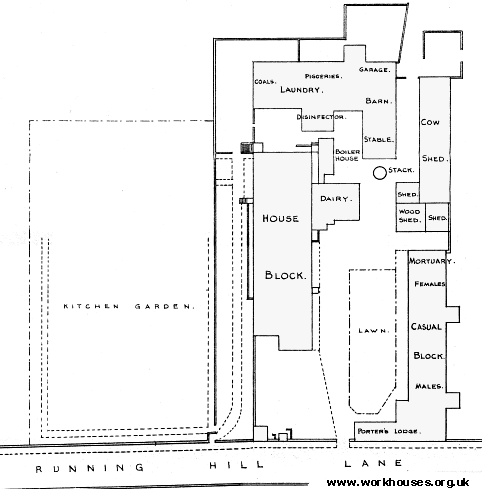
Saddleworth site, 1930.
It is believed that the building continued in use for some years as a geriatric hospital. The site then became a farm, with the workhouse main building being demolished. The surviving blocks have now been converted to residential use.
Staff
Inmates
Records
Note: many repositories impose a closure period of up to 100 years for records identifying individuals. Before travelling a long distance, always check that the records you want to consult will be available.
- No local records are known to survive.
Bibliography
Links
- Ripon Workhouse Museum and Garden, Sharow View, Allhallowgate, Ripon HG4 1LE.
Unless otherwise indicated, this page () is copyright Peter Higginbotham. Contents may not be reproduced without permission.


